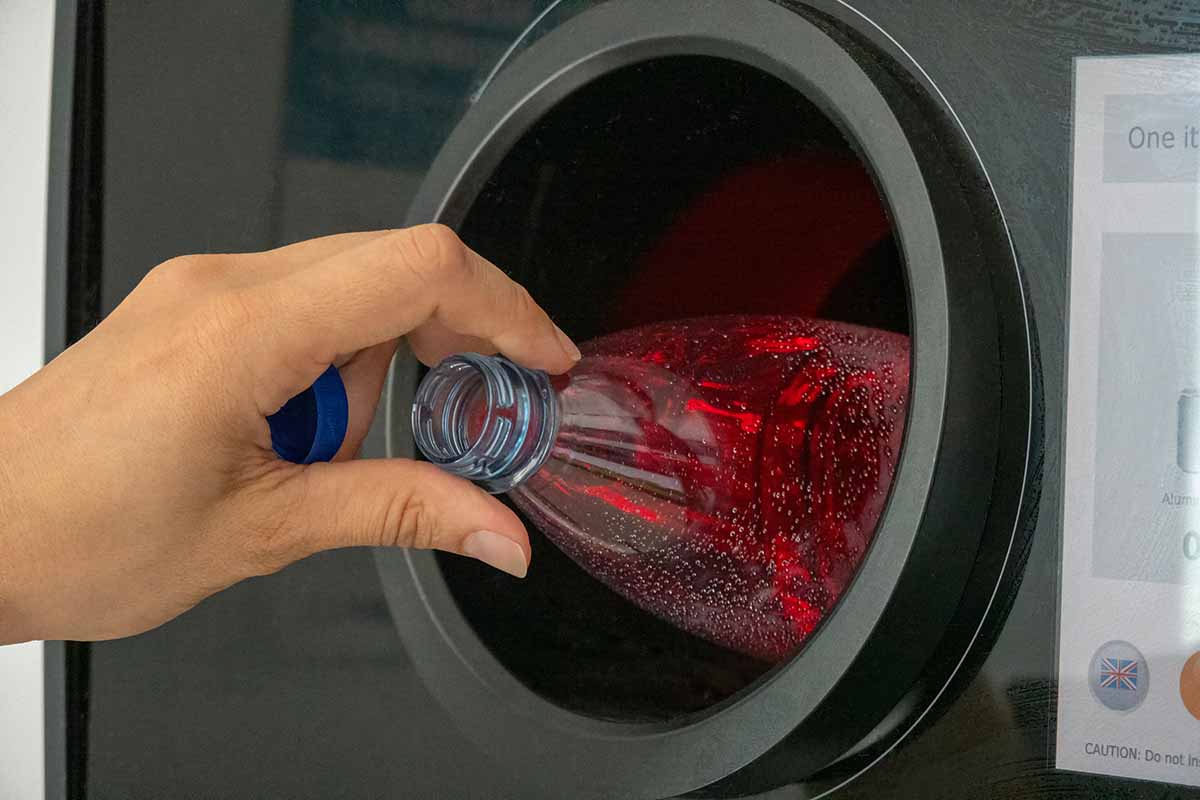
The state’s program was once considered a national leader, achieving redemption rates topping 95%, but showed a significant drop by 2024, a recent report showed. | Veja / Shutterstock
A new report from the University of Michigan warns that the state’s signature 10-cent bottle deposit system is faltering, with redemption rates dropping to their lowest level in decades and structural gaps threatening the program’s ability to support Michigan’s recycling and climate goals.
Once considered a national leader, the state achieved redemption rates as high as 95%, but the report indicates the system has experienced a significant drop, declining to 70.4% in 2024.
Michigan first implemented its deposit law in 1978, becoming the first state to adopt a dime deposit. The law was initially intended to address pervasive roadside litter and reduce cleanup costs. Early evidence showed dramatic litter reduction, and a reliable stream of clean, high-value recycling materials followed.
However, while many states have since updated their systems, Michigan’s structure has remained largely unchanged since the 1990s.
Under the current framework, distributors initiate the deposit, retailers handle container returns, consumers redeem the deposit at the store and distributors or third-party contractors collect the empties. Importantly, Michigan lacks redemption centers, which other bottle-bill states use to relieve burdens on retailers.
A major portion of the report focuses on unredeemed deposits, or escheats. Tamanna Sengupta, a research assistant at the UM Center for Sustainable Systems and one of the report authors, explained that as redemption rates fall, escheats rise, providing a growing funding pool. Michigan distributes the first $1 million each year to the Bottle Bill Enforcement Fund, then allocates 75% to Environment, Great Lakes and Energy’s (EGLE’s) Cleanup & Redevelopment Trust Fund and 25% to retailers based on the number of containers sold.
EGLE’s spending of escheats—obtained via a Freedom of Information Act request —reveals a steep rise in total expenditures, from $26 million in 2014 to more than $114 million in 2024. Nearly all is used for environmental cleanup; only 2-3% annually is directed toward recycling initiatives.
Making a change
The report advocates for several changes that would push the numbers back to top levels.
“Based on our analysis, implementing universal redemption would likely have an immediate positive impact,” Sengupta said. “The main reason is consumer convenience and accessibility, which stakeholders agreed is central to driving high redemption rates.”
Currently, retailers are only legally required to accept containers for the specific brands they sell, leading to consumer confusion and frustration. While the law allows them to accept other brands, it’s not mandated.
“Since changing the law can be a slow process, our report recommends a voluntary, industry-led agreement on universal redemption,” Sengupta said. “This is a feasible, high-impact starting point that is legally possible now and would immediately improve the user experience.”
The report also found that the current escheat distribution creates a “backward incentive,” as stakeholders can benefit financially when the system performs poorly and redemption rates fall.
“To align financial incentives with high performance, the primary recommendation is to reinvest the unredeemed deposits (escheats) back into the recycling system,” Sengupta said. “This proposal had broad stakeholder consensus.”
Specifically, the report recommends establishing a Statewide Bottle Deposit Modernization Fund. This fund could use escheats to provide grants for infrastructure upgrades and technology especially for small retailers and underserved areas, and ensure that unclaimed deposits are reinvested in the system.
Lawmakers are considering adding water bottles to Michigan’s deposit system, but researchers caution that any expansion must be designed to avoid placing new burdens on low-income and water-insecure residents.
“That’s a critical point in the report,” Sengupta said. “Stakeholders are rightly concerned that adding a deposit to water bottles could disproportionately affect low-income and water-insecure households if not planned well. The report is clear that any expansion must be paired with strong protective measures to safeguard these communities.”
This includes ensuring accessible and convenient redemption options, such as universal and bulk redemption, particularly in under-resourced areas, and rolling out public communication strategies so the system is easy to use.
Learning from others
The report shows Michigan can learn from other states’ playbooks, especially when it comes to funding and logistics.
“Oregon, for instance, has successful redemption centers funded by a cooperative of distributors and retailers, not a state-mandated handling fee,” Sengupta said. “They also provide a positive example of how a deposit system and a broader Extended Producer Responsibility (EPR) policy can coexist effectively.”
Then there’s Maine, which offers a commingling agreement, where a distributor co-op collects containers based on material type (like all aluminum) rather than by brand.
“This practice is also a form of universal redemption since the consumer can return their containers irrespective of whether they purchased them from a specific store,” Sengupta said. “The report sees this as a practical model for Michigan, especially since we already have a third-party pickup system.”
The report concludes that Michigan’s system has strong public support and a solid historical foundation, but requires modernization to remain effective, equitable and aligned with circular-economy aspirations.
More stories about container deposits

